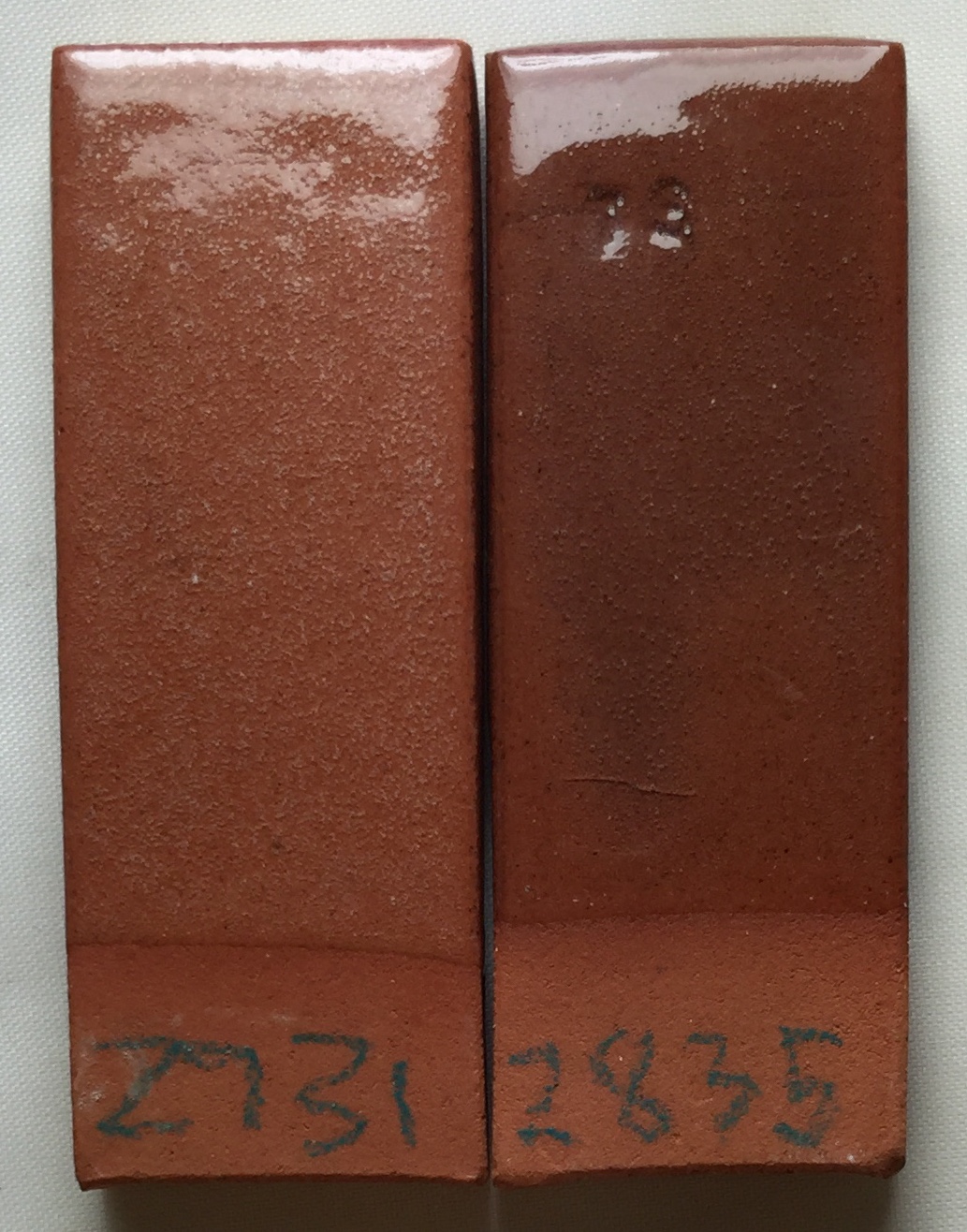Frits melt so much more evenly and trouble free
These two specimens are the same terra cotta clay fired at the same temperature (cone 03) in the same kiln. The insight-live.com/glossary/118">chemistry of the glazes is similar but the materials that supply that chemistry are different. The one on the left mixes 30% frit with five other materials, the one on the right mixes 90%+ frit with one other material. Ulexite is the main source of boron (the melter) in #1, it decomposes during firing expelling 30% of its weight as gases (mostly CO2). These create the bubbles. Each of its six materials has its own melting characteristics. While they interact during melting they do not mix to create a homogeneous glass, it contains phases (discontinuities) that mar the fired surface. In the fritted glaze all the particles soften and melt in unison and produce no gas. Notice that it has also interacted with the body, fluxing and darkening it and forming a better interface. And it has passed (and healed) most of the bubbles from the body.
Pages that reference this post in the Digitalfire Reference Library:
Frit, Frit, Boron Frit, Phase Separation, Glaze Bubbles

This post is one of thousands found in the Digitalfire Reference Database. Most are part of a timeline maintained by Tony Hansen. You can search that timeline on the home page of digitalfire.com.
